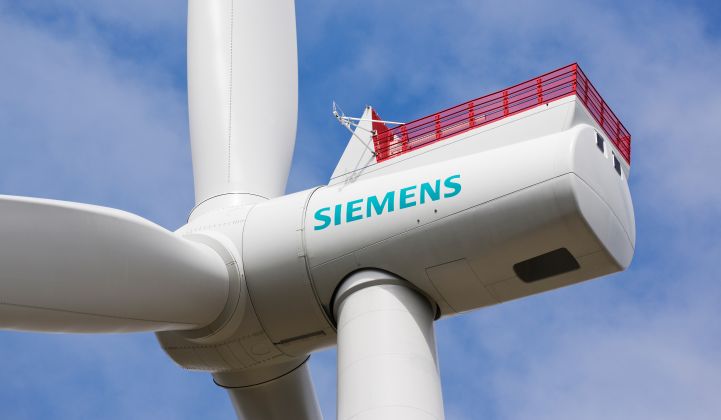Siemens Gamesa last month trumpeted market-leading innovation in turbines installed at the world’s largest floating wind farm.
But at least one expert has claimed the 6-megawatt horizontal-axis wind turbine (HAWT) design deployed at Hywind is not groundbreaking enough to meet the industry’s future needs.
“Although I have done a lot of technical due-diligence work since 2010, I have never been entirely convinced that simply making HAWTs bigger and bigger is a way forward,” said geotechnical and engineering geology consultant Chris Golightly.
Instead, Golightly believes the industry should be moving to develop vertical-axis wind turbine (VAWT) designs for use with floating substructures. “VAWTs are the most effective way of getting electrical power from kinetic energy in moving air,” he said.
This view might not be popular with mainstream turbine makers, however, because the industry remains "a very risk-averse business for now,” he said.
The six Siemens Gamesa turbines installed on Statoil spar-buoy foundations for Hywind, for example, follow a traditional design with minimal modifications for floating operations.
The direct-drive machines are equipped with lightweight nacelles and have been given new controller algorithms for rotor pitch and yaw drive regulation, said Siemens Gamesa in a press statement.
Such modest adaptations could be excused because it makes sense to test the floating foundations at commercial scale before doing anything too fancy with the turbine design.
But with floating wind under immense pressure to rapidly reduce costs down to fixed-offshore or even onshore levels, Golightly and others argue that a radical rethink in turbine design could be required.
One significant change might be to reduce the number of HAWT blades from three to two.
Seawind Ocean Technology, a Dutch developer, last month received an undisclosed strategic equity investment from Enzen Global for a two-blade, 6.2-megawatt turbine design that the company says could cut the cost of energy by 50 percent.
In a LinkedIn post, CEO Martin Jakubowski said that although the design would yield about 2 percent less electricity than a three-bladed equivalent, the decrease in output would be greatly compensated for in terms of cost reductions.
Not only would machines weigh less by losing a blade, but the blades also would not need a pitch mechanism, cutting rotor weight in half. “It is a mere quirk of history that almost all wind turbines today have three blades rather than two,” said Jakubowski.
“Three blades did not become the standard due to technical considerations or a systemic approach to the fundamentals of wind turbines, but because of the trial-and-error approach of the industry’s ‘garage’ pioneers in 1970s Denmark," he wrote.
Seawind is still touting a HAWT design, however.
And as turbines progress toward the double-digit-megawatt scale that floating wind could allow, it is unclear whether these machines will be the most efficient or even the most stable, particularly when combined with semi-submersible or floater foundations.
That is why Sandia National Laboratories has been working on an Innovative Offshore Vertical-Axis Wind Turbine Rotors project that aims to develop a floating VAWT rotor design for use in machines of up to 20 megawatts.
“The unique arrangement of a VAWT allows the heavy generator and related components to be located at the base of the tower as opposed to the top, as is typical of a HAWT,” observed the project team in a 2014 paper.
“This configuration lowers the topside center of gravity, which reduces the platform stability requirements, leading to smaller and cheaper platforms," the authors wrote.
Another bonus of the VAWT is that most of the high-maintenance components would be close to sea level instead of up a tower, which would cut maintenance costs. But with all of that said, it should be noted that the VAWT concept is not new. And it has failed to catch on before.
A European Union-funded project called DeepWind, for example, proposed a floating VAWT design in the early part of this decade. Progress stalled after 2014, though.
It may have been that DeepWind was simply ahead of its time, and now floating foundations are becoming a commercial reality there could be a resurgence in VAWT interest. Certainly, said Golightly, “there are quite a few places, mostly universities" working on VAWTs.
However, it will take a serious commercial player to make the wind industry sit up and take notice. And while turbine makers remain focused on improving the horizontal-axis format, finding such a player could be a problem.
